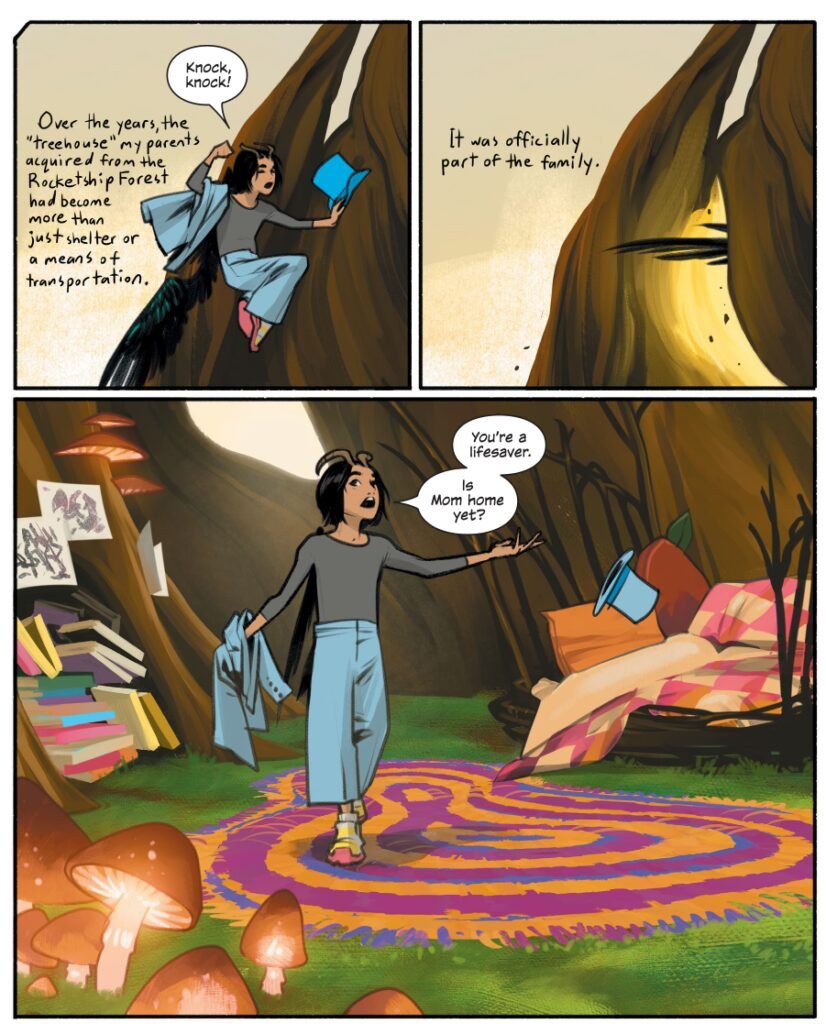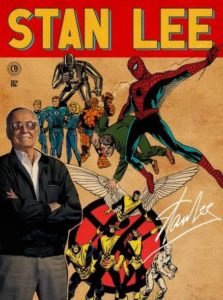Writer: Brian K. Vaughan
Artist: Fiona Staples
Image Comics, 2022
The wait has been long, but Brian K. Vaughan and Fiona Staples’ seminal work Saga is finally back. After the cliffhanger at the breath-taking finale of part one, the series went into an extended hiatus, leaving followers of the book (including this reviewer) waiting for almost four years.
The problem with these kind of delays is that they always end up hurting the final product in one way or another. The hype built around the release of the next episode is bound gives rise to unrealistic expectations, and fans may find that the return of something they loved is not as spectacular or dramatic as they wish it were. How does Saga #55 fare in this regard?
Particularly well. After the heart-breaking death of one of the lead characters – Marko – in issue 54, the series immediately goes back to a more familiar place, with the remains of his family (both literal and metaphorical) returning to a life on the run. As with every new arc in Saga, Hazel has grown quite a bit since the readers last saw her, and returns to action with a line that mirrors the beginning of her narration in issue 1.

Thus, “This is how an idea is created” turns into “this is how an idea survives”, taking readers back to the very beginning of the story while presenting the new set of circumstances around Hazel’s life. She still represents a forbidden union between two warring factions, but now she is much more than that. She has her own agency, goals, and dreams, and is much more of an active character than she was at the beginning of the run.
Like almost every other 6-issue arc of Saga’s run, issue 55 starts with a time-skip that presents a set of familiar characters in a wildly new environment, a much more noticeable storytelling device now that two of the most important people in the first half of the run are now completely gone. Alana, Hazel and Squire have more or less rebuilt their life and continue to be on the run after the tragic events of issue 54, but a good chunk of the main cast (namely, fan favorite characters like Ghüs and Petrichor) is missing, with their fates after the finale of part one still waiting to be revealed.
In this, this reviewer respects Saga very much. Instead of jumping right into the action, or taking an entire issue to deal with the loss of one of its most pivotal characters, it slows down and goes back to its roots. Writer Brian K. Vaughan knows he still has another 54 issues of story and wants to provide his readers with a much more gradual reintroduction to his universe’s characters. It is practically a guarantee that most of the old cast will return, and that future issues will give readers and characters alike closure after Marko’s death, but, for now, Saga needs to pick up where it left off.

Because, as mentioned above, Hazel is now much more of a driving force in the plot, and does not depend on secondary characters as much to tell her story for her. She is very much able to fend for herself, to a degree, and has a much more defined personality compared to the majority of part one. The fact that her face is the splash art that greets the readers back to Saga’s world is basically reminding the readers that this is her story as much as it was her parents’.
Which leads us to the next point in this review: Fiona Staples’ artwork has improved quite a bit since she last worked on the book. Granted, the art she was putting out by the time Saga went on hiatus was already beautiful and expressive, but her technical skill is very much at its peak, something especially noticeable in close-ups and splash pages. Both creators are shown to be doing their best in this beautiful return to form, and it really shows.
In short, Saga #55 is a subtle but promising triumph. It could have very easily devolved into character-centric fanservice and cheap sentimentalism, but instead it forces the characters and the readers to look forward and not dwell too much in the past. There will be time for new and old characters to show up and participate in one of the most well-crafted stories ever to grace Image Comics, but for now Vaughan and Staples are doing what they do best: building a world and a cast of characters that readers can connect with and understand before they start putting them in completely new situations.

